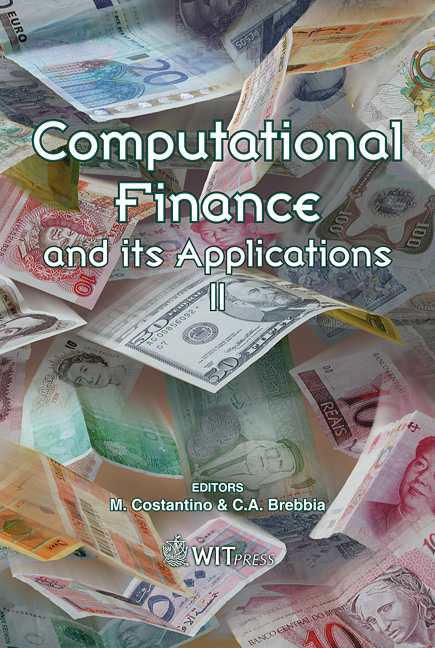Selection Of An Optimal Portfolio With Stochastic Volatility And Discrete Observations
Price
Free (open access)
Transaction
Volume
43
Pages
10
Published
2006
Size
712 kb
Paper DOI
10.2495/CF060361
Copyright
WIT Press
Author(s)
N. V. Batalova, V. Maroussov &F. G. Viens
Abstract
We give a numerical method to calculate the optimal self-financing portfolio of stock and risk-free asset to maximize the wealth’s expected future utility, in the case of stochastic volatility and discrete observations: the portfolio stock allocation is only allowed to change discretely in time at fixed time intervals. We use a particle-filtering and Monte-Carlo-type algorithm, which we implement forward in time in the case of power utility. Keywords: portfolio optimization, stochastic volatility, particle filtering, Monte- Carlo method, expected utility, diffusion processes, numerical implementation. 1 Introduction and summary For many markets, the Black-Scholes (BS) model’s basic assumption, that a stock’s volatility is constant, is far from being satisfied. Empirical evidence for this inadequacy is known to include the so-called volatility smile for implied volatilities, and other phenomena not visible within the BS model. Many natural extensions posit the volatility itself is random; when it is a stochastic process, this is the stochastic volatility (SV) model, which we use in this article. We propose a systematic way to optimize a portfolio of continuous-time SV stock and risk-free asset using a discrete-time strategy, thereby offering a way to minimize transaction costs. Section 2 presents a short overview of the optimal portfolio selection problem, and its position in the literature, including some references on stochastic volatility, and a short list of ways which have been suggested to tackle the issue of nonconstant volatility. Section 3 describes the SV model, along with tools needed to
Keywords
portfolio optimization, stochastic volatility, particle filtering, Monte- Carlo method, expected utility, diffusion processes, numerical implementation.





